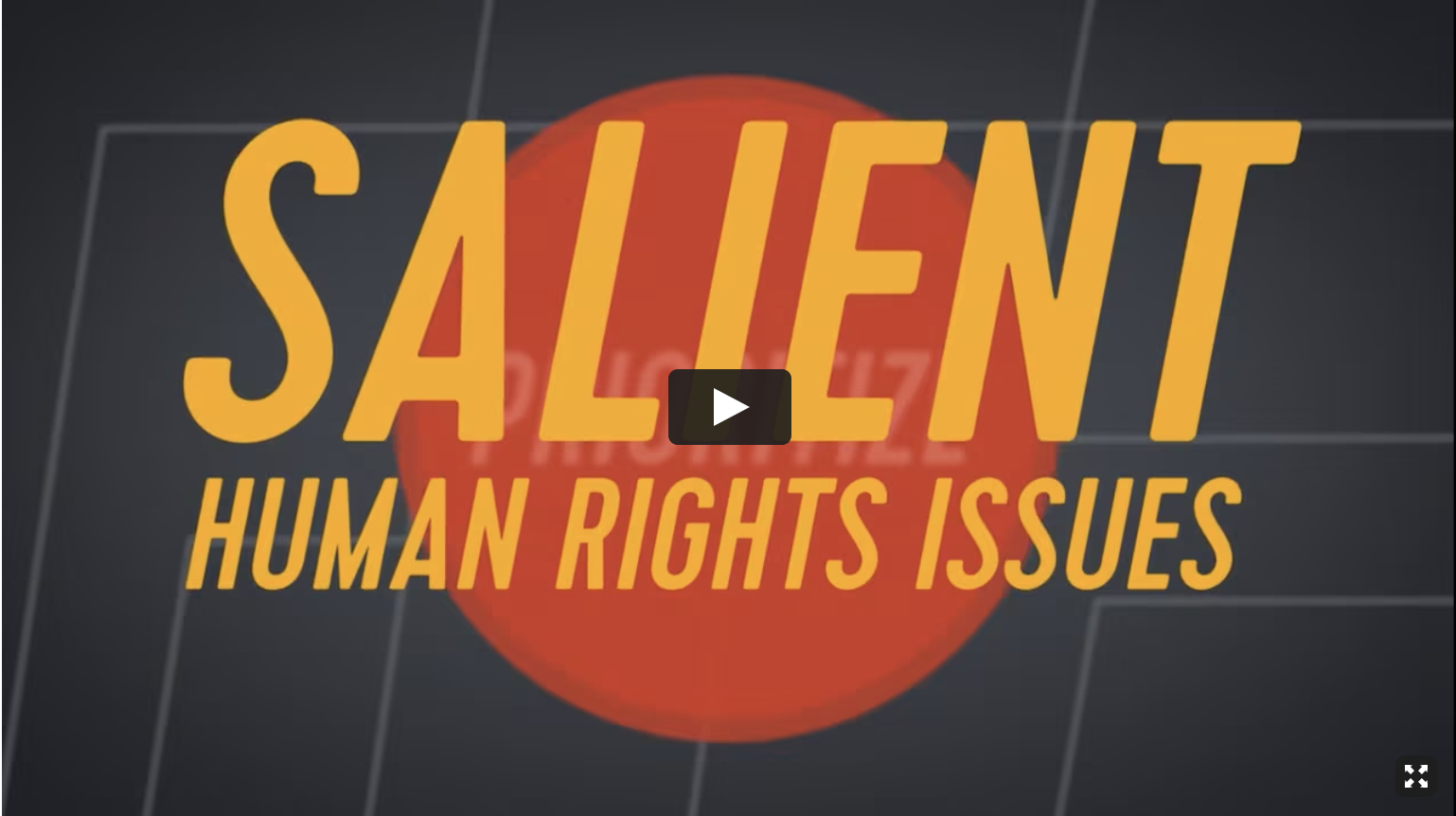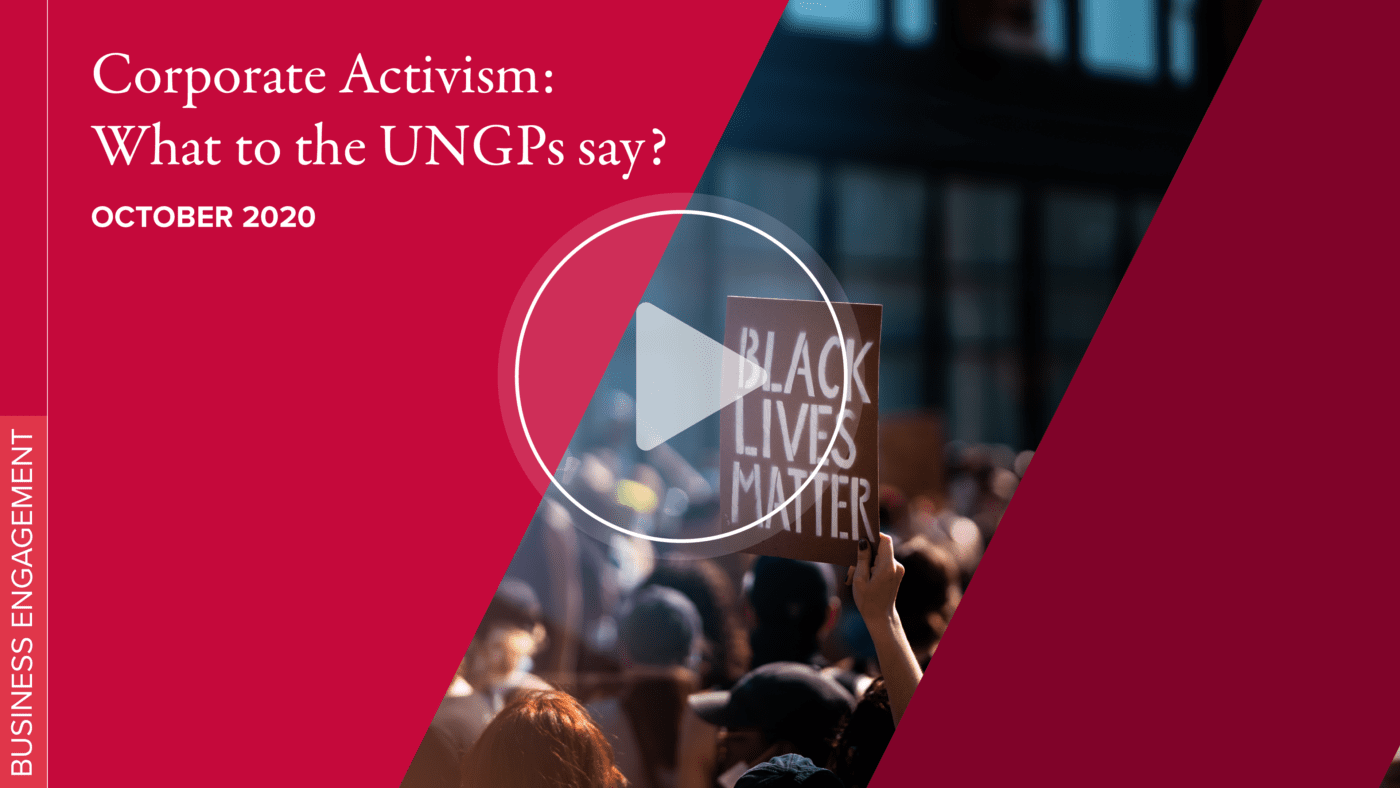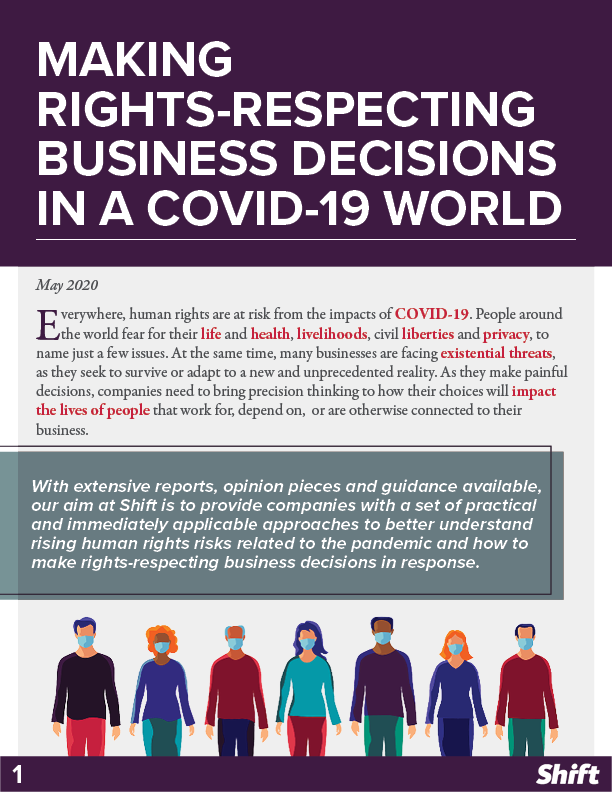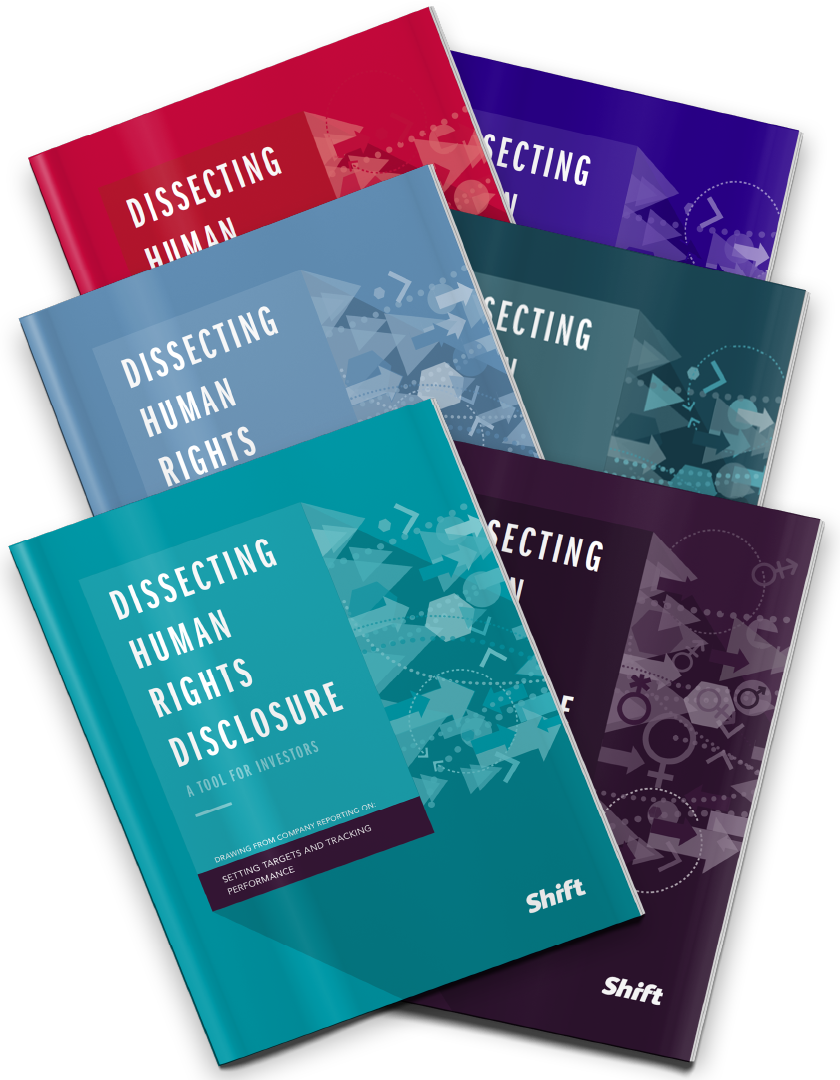This resource was developed in support of the UN Guiding Principles Reporting Framework, developed jointly by Shift and Mazars. The Q&A on this page is an excerpt from a longer Q&A on salient human rights issues — see the full explanation here.
What are salient human rights issues?
Salient human rights issues: The human rights at risk of the most severe negative impact through the company’s activities and business relationships.
A company’s salient human rights issues are those human rights that stand out because they are at risk of the most severe negative impact through the company’s activities or business relationships.
This concept of salience uses the lens of risk to people, not the business, as the starting point, while recognizing that where risks to people’s human rights are greatest, there is strong convergence with risk to the business.
The emphasis of salience lies on those impacts that are:
- Most severe: based on how grave and how widespread the impact would be and how hard it would be to put right the resulting harm.
- Potential: meaning those impacts that have some likelihood of occurring in the future, recognizing that these are often, though not limited to, those impacts that have occurred in the past;
- Negative: placing the focus on the avoidance of harm to human rights rather than unrelated initiatives to support or promote human rights;
- Impacts on human rights: placing the focus on risk to people, rather than on risk to the business.
Salience therefore focuses the company’s resources on finding information that is necessary for its own ability to manage risks to human rights, and related risks to the business. In this way, it helps companies report on the human rights information that shareholders, investors, governments, customers, consumers, media, civil society organizations and directly affected people want to see.
What is the difference from materiality?
Materiality depends on the choice of a particular audience or goal for which things are then judged more or less important. The audience may be shareholders alone or other stakeholders as well. A goal may be profit-making alone, decisions of an investor more widely, or societal welfare generally. The choice of audience or goal then dictates the selection of material issues.
By contrast, salient human rights issues are not defined in reference to any one audience or goal. Salience puts the focus on those human rights at risk of the most severe negative impact. This provides a consistent, predictable and principled means of identifying the appropriate focus of human rights reporting. At the same time, it gives business an effective tool for understanding how human rights issues connect with risk to the business.
When conducting materiality assessments, many companies discount human rights issues due to common assumptions, such as:
- Assumption of no risk to human rights: an assumption that the company doesn’t and couldn’t be involved with negative impacts on human rights, based on a limited knowledge of human rights and how they can be affected by business activities and through business relationships;
- Assumption that risk to human rights doesn’t matter: An untested assumption that impacts on human rights are without substantial risk to the company and are, therefore, not material, ignoring the many ways in which such impacts can lead to tangible and intangible costs and loss of value for the business, particularly in the medium to long term;
- Assumption that past impact defines future risk: An assumption that looking at past impacts will be sufficient for the identification of forward-looking risks to human rights, ignoring risks that might be identifiable from the experience of others in the industry, from other industries, from an understanding of emerging issues and from scenario planning.
Where materiality processes engage external stakeholders to help inform the company’s understanding of relevant issues for reporting, common pitfalls include:
- Skewed feedback: Processes that engage with stakeholders based on their expertise in areas the company already assumes are material, such that their feedback reinforces the company’s starting assumptions.
- Under-informed feedback: Engagement processes where stakeholders are not given sufficient insight into the company’s operations, range of business activities and business relationships in order to provide informed advice of where they most salient issues might lie.
As a result of these common assumptions and pitfalls, many companies’ existing materiality processes fail to adequately reflect human rights issues or to identify those human rights that are at greatest risk and are therefore priorities for management and reporting.
Jump to the complete Q&A resource to see answers to the following questions:
- Why is this distinction between salience and materiality helpful for companies?
- Why is this distinction between salience and materiality helpful for investors?
- Are risks to human rights separate from risks to business?
- Is materiality still relevant for reporting?
- How should a company identify its salient human rights issues?




